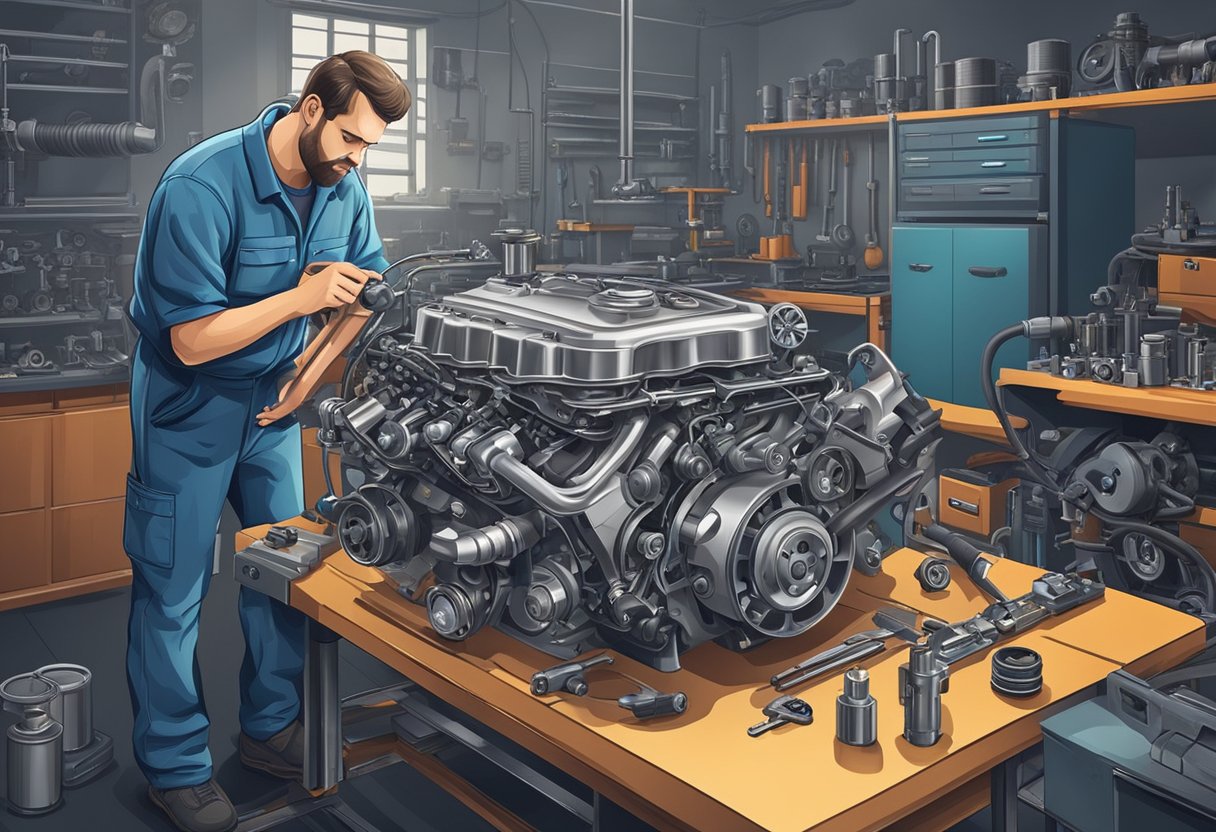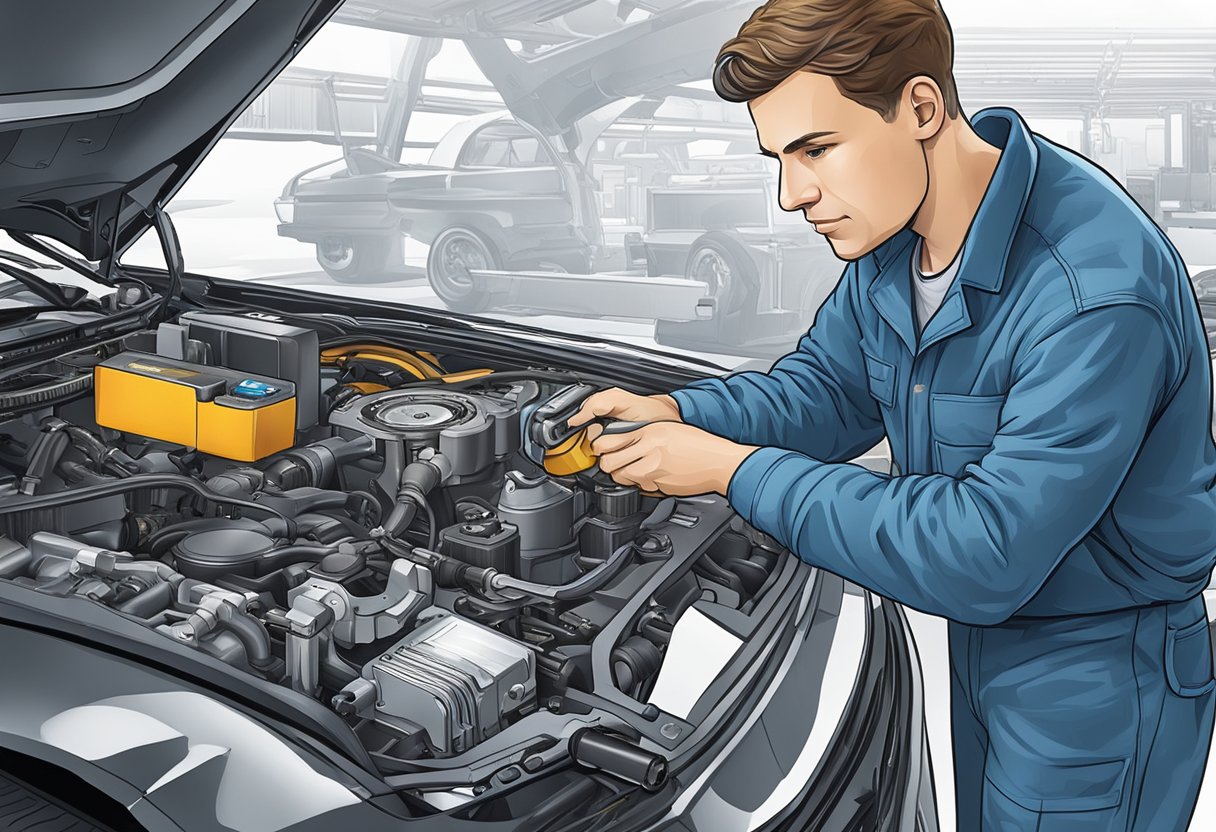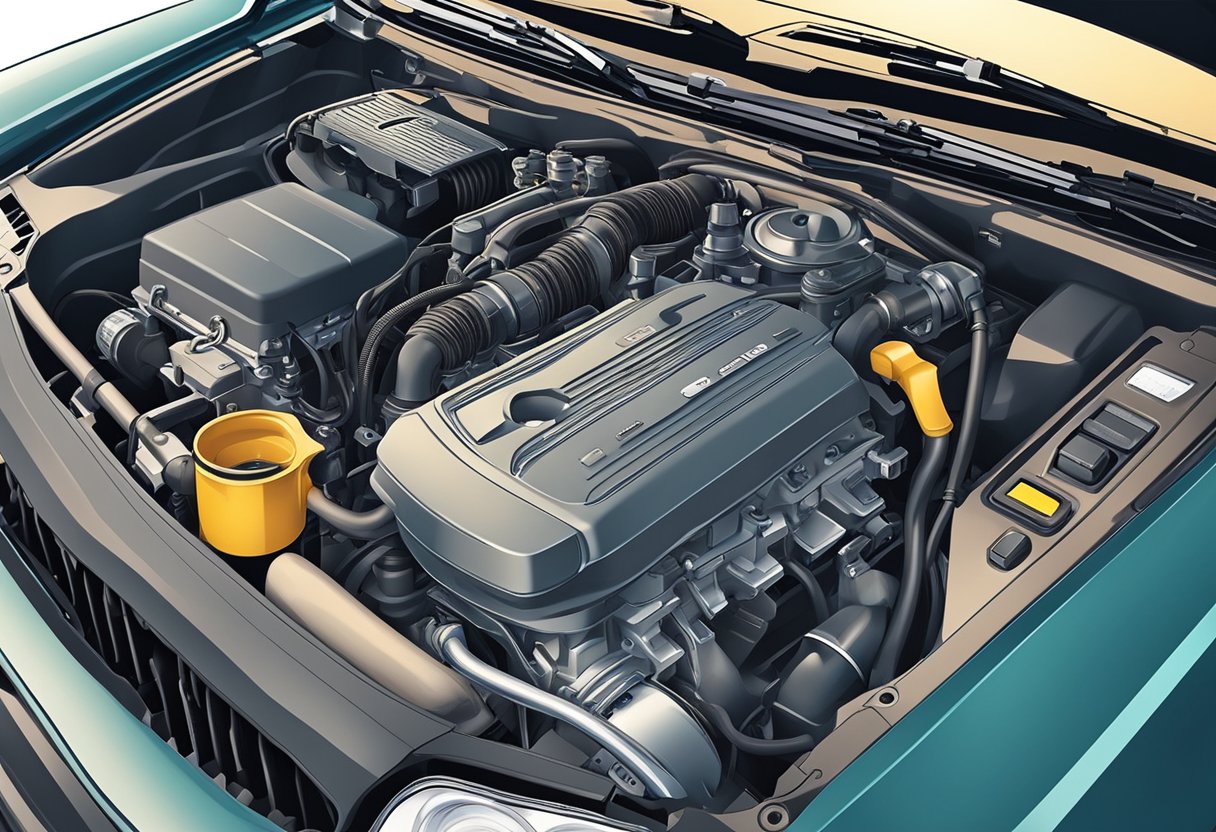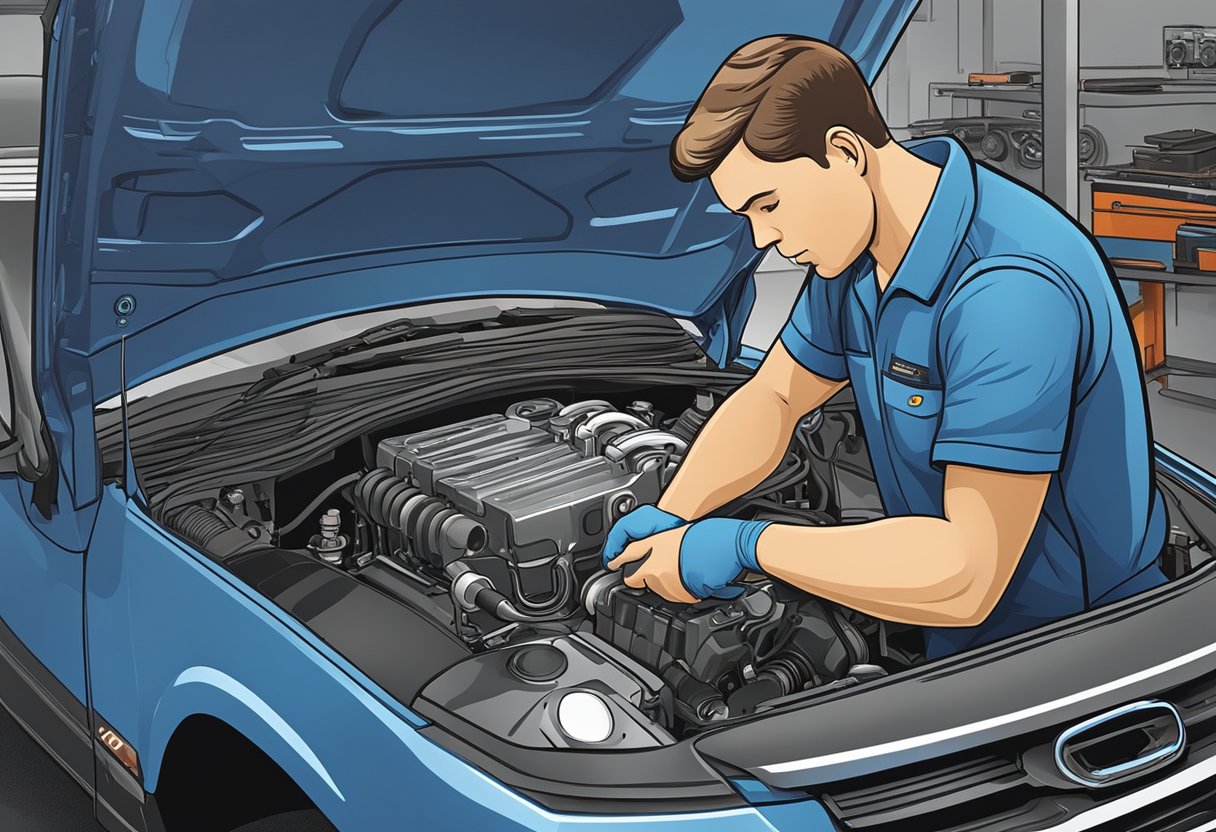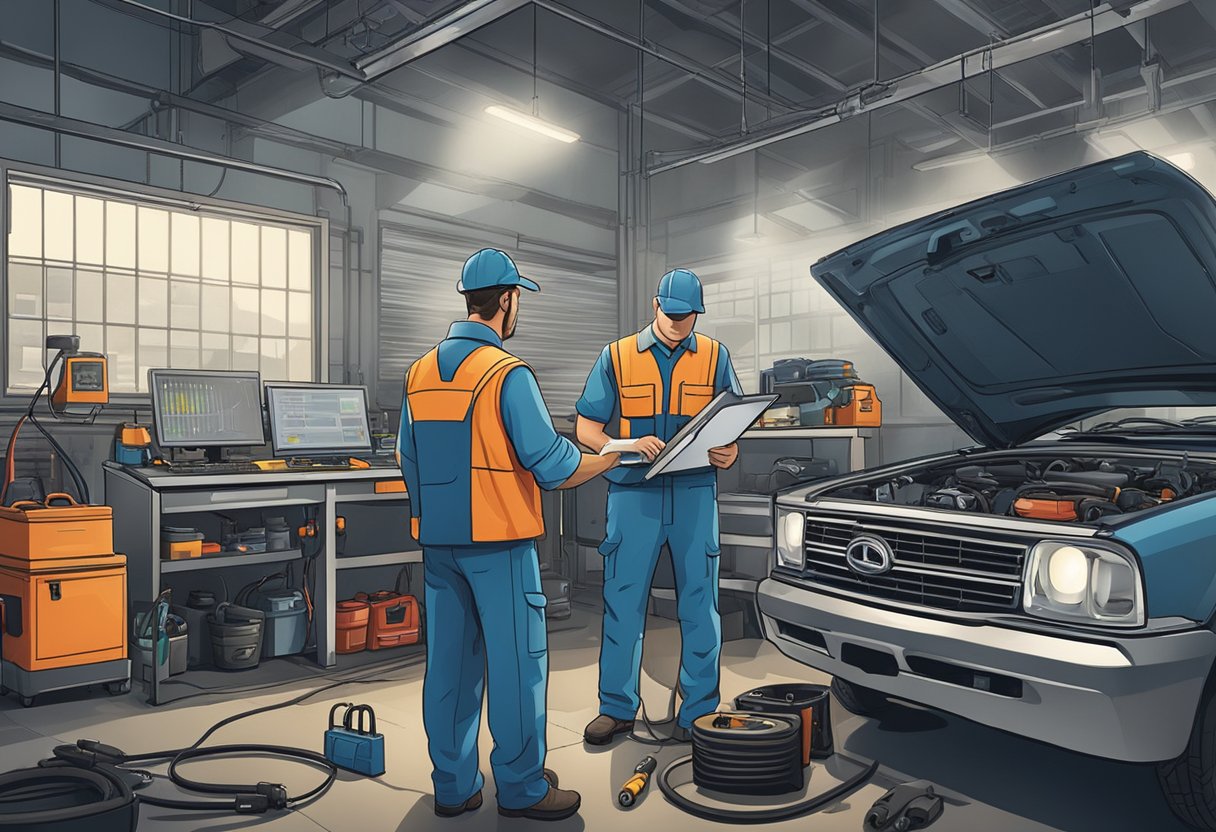If you’re experiencing engine issues and your check engine light has come on, you may have encountered the P0014 code.
This code indicates a problem with the camshaft position and timing over-advanced.
When this occurs, the engine’s computer detects that the camshaft is out of sync with the crankshaft, which can cause a variety of issues with the engine’s performance.
There are several potential causes of the P0014 code, including issues with the camshaft or crankshaft sensors, problems with the timing chain or belt, or issues with the engine’s oil pressure.
When these components are not working properly, it can cause the camshaft to be out of sync with the crankshaft, which can lead to poor engine performance, reduced fuel efficiency, and other issues.
Understanding P0014 Code
Definition and Meaning
If you have a check engine light on and the diagnostic trouble code (DTC) is P0014, it means that there is a problem with the Camshaft Position and Timing Over-Advanced.
This code is a generic powertrain code, which means that it applies to all vehicles equipped with OBD-II system, including cars, trucks and SUVs.
The P0014 code is related to the camshaft position and timing, which are essential components of the engine’s operation.
The camshaft controls the opening and closing of the engine’s valves, while the timing ensures that the valves open and close at the right time.
If the camshaft position and timing are over-advanced, it can cause a variety of problems, including poor engine performance, reduced fuel efficiency, and increased emissions.
Causes of P0014 Code
The most common causes of the P0014 code are related to the camshaft position and timing. Some of the possible causes include:
- Faulty camshaft position sensor
- Faulty camshaft phaser
- Timing chain or belt issues
- Engine oil issues
- Wiring or electrical issues
The camshaft position sensor and phaser are responsible for monitoring the position and timing of the camshaft.
If either of these components is faulty, it can cause the P0014 code to appear.
Additionally, if the timing chain or belt is worn or damaged, it can cause the camshaft to be over-advanced.
Engine oil issues can also cause the P0014 code to appear.
If the engine oil is dirty or low, it can cause problems with the camshaft position and timing.
Finally, wiring or electrical issues can cause the P0014 code to appear.
If there is a problem with the wiring or electrical connections related to the camshaft position sensor or phaser, it can cause the code to appear.
In conclusion, the P0014 code is related to the camshaft position and timing, and it can cause a variety of problems if left unaddressed.
If you have a check engine light on and the diagnostic trouble code is P0014, it is important to have your vehicle inspected by a qualified mechanic to determine the underlying cause of the problem.
Diagnostic Tools and Equipment
To accurately diagnose a P0014 code, you will need several diagnostic tools and equipment. These include:
-
OBD-II Scanner: This is the primary tool used to retrieve the P0014 code from the vehicle’s computer system.
It is essential to use a reliable scanner that can read manufacturer-specific codes to avoid misdiagnosis.
-
Digital Multimeter: This tool is used to test the camshaft position sensor and the timing solenoid valve for proper voltage and resistance.
A faulty sensor or valve can cause the P0014 code to appear.
-
Oscilloscope: An oscilloscope is used to check the waveform of the camshaft position sensor and timing solenoid valve.
It can help identify any irregularities in the signal that may be causing the code.
-
Timing Light: A timing light is used to verify the timing of the engine.
If the timing is off, it can cause the camshaft position to be over-advanced, triggering the P0014 code.
-
Service Manual: A service manual specific to your vehicle’s make and model will provide you with diagnostic procedures and specifications for testing the camshaft position sensor and timing solenoid valve.
Having the right diagnostic tools and equipment is crucial to accurately diagnose and repair the P0014 code.
It is recommended to use high-quality tools and follow the manufacturer’s diagnostic procedures to avoid misdiagnosis and costly repairs.
How Does a Crankshaft Position Sensor Issue Relate to Camshaft Position and Timing Over-Advanced Solutions?
When dealing with crankshaft position sensor performance issues, it’s important to consider potential effects on camshaft position and timing. Over-advanced solutions may occur if the crankshaft and camshaft positions are not properly synchronized. Resolving crankshaft position sensor issues can prevent timing imbalances and maintain smooth engine operation.
Step-by-Step Troubleshooting
If you’re experiencing a P0014 code, it’s important to diagnose and fix the issue as soon as possible to prevent further damage to your engine.
Here are the steps you can take to troubleshoot the problem:
Initial Inspection
Before diving into more complex troubleshooting, it’s important to perform a visual inspection of the camshaft position sensor and solenoid.
Check for any visible damage or signs of wear and tear.
Additionally, inspect the timing chain and system to ensure that everything is in good condition and properly aligned.
Sensor and Solenoid Tests
If the initial inspection doesn’t reveal any issues, the next step is to test the camshaft position sensor and solenoid.
Use a multimeter to check the resistance of the sensor and solenoid.
Compare the readings to the manufacturer’s specifications to determine if they are within acceptable limits.
If the readings are outside of the acceptable range, replace the faulty component.
If they are within the acceptable range, move on to the next step.
Timing Chain and System Inspection
If the sensor and solenoid tests don’t reveal any issues, it’s time to inspect the timing chain and system.
Use a timing light to check the timing of the engine. If the timing is off, it could be due to a stretched or damaged timing chain.
Inspect the timing chain for any signs of wear or damage.
If the timing chain is in good condition, check the timing chain tensioner and guides for wear and damage.
By following these steps, you can diagnose and fix the issue causing the P0014 code.
Remember to always refer to the manufacturer’s specifications and use caution when working on your engine.
How Does a Camshaft Position Sensor Affect Camshaft Position and Timing Over-Advanced?
The understanding camshaft position sensor is crucial in determining the exact position of the camshaft. If the sensor malfunctions and causes the camshaft position to be over-advanced, it can result in poor engine performance, misfires, and potential damage to the valves and pistons. It’s essential to ensure the sensor is properly functioning for accurate timing.
Are P0014 and P2002 related codes and do they require similar solutions for resolution?
The codes P0014 and P2002 can be related as they both indicate issues with the diesel engine’s performance. However, they require different solutions for resolution. P0014 is related to the camshaft position, while P2002 pertains to the diesel particulate filter. Both issues need to be addressed for improving diesel engine efficiency.
Professional Repair and Solutions
If you have received a P0014 code diagnosis, it is important to seek professional repair and solutions.
There are two common solutions that mechanics and technicians use to fix this issue: Camshaft Position Actuator Repair and ECM Update or Replacement.
Camshaft Position Actuator Repair
The Camshaft Position Actuator is a small component that controls the camshaft’s position and timing.
If the actuator is faulty, it can cause the camshaft to be over-advanced, triggering the P0014 code.
In this case, the actuator needs to be repaired or replaced.
To repair the actuator, a mechanic will need to remove the valve cover and timing chain to access the actuator.
Once the actuator is removed, it can be cleaned and inspected for damage.
If the actuator is damaged beyond repair, it will need to be replaced.
ECM Update or Replacement
If the Camshaft Position Actuator is not the issue, the next step is to update or replace the Engine Control Module (ECM).
The ECM is responsible for controlling the engine’s operation, including the camshaft’s position and timing.
If the ECM is faulty or outdated, it can cause the camshaft to be over-advanced, triggering the P0014 code.
To update the ECM, a mechanic will need to connect the vehicle to a diagnostic tool and download the latest software update.
If the ECM is damaged beyond repair, it will need to be replaced.
In conclusion, if you receive a P0014 code diagnosis, it is important to seek professional repair and solutions.
Camshaft Position Actuator Repair and ECM Update or Replacement are two common solutions that mechanics and technicians use to fix this issue.
Preventive Measures and Maintenance Tips
To avoid encountering the P0014 code, you can follow some preventive measures and maintenance tips.
Here are some of the things you can do:
- Regularly check the engine oil level and quality.
Low oil pressure or dirty oil can cause the camshaft to advance too much, triggering the P0014 code.
- Change the engine oil and filter according to the manufacturer’s recommended schedule.
Old oil can become contaminated and affect the camshaft’s performance.
- Use the recommended oil viscosity and type for your engine.
Using the wrong oil can cause issues with the camshaft and other engine components.
- Keep up with your vehicle’s scheduled maintenance, including tune-ups and inspections.
This can help catch any issues before they become serious.
- If you notice any unusual engine noises or performance issues, have your vehicle inspected by a qualified mechanic.
Ignoring these symptoms can lead to more severe problems down the road.
By following these preventive measures and maintenance tips, you can help ensure your vehicle runs smoothly and avoid encountering the P0014 code.
As an Amazon Associate we earn from qualifying purchases.








